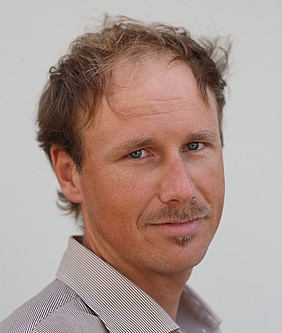On February 1st, 2019, Prof. Geert Leus (Delft University of Technology, The Netherlands) delivered a talk entitled "Graph Signal Processing: Filters and Spectral Estimation", at the Technical University of Crete (Science Building, ampitheater, 1st floor). The invited talk was organized by the ΙΕΕΕ Signal Processing Society (SPS) Greece Chapter and the School of Electrical and Computer Engineering of TUC. Prof. Geert Leus is a Fellow Member of ΙΕΕΕ and a Distinguished Lecturer of IEEE Signal Processing Society. Τhe ECE Channel will broadcast the talk.
Abstract:
One of the cornerstones of the field of graph signal processing are graph filters, direct analogues of time-domain filters, but intended for signals defined on graphs. In this talk, we give an overview of the graph filtering problem. More specifically, we look at the family of finite impulse response (FIR) and infinite impulse response (IIR) graph filters and show how they can be used for different applications. Next, the concepts of graph stationarity and the graph power spectrum are introduced, which facilitates the analysis and processing of random graph signals. This is a challenging task due to the irregularity of the underlying graph domain. However, it turns out that graph filters can be used to define stationary graph signals and their power spectrum. Methods for estimating the power spectrum are presented, which include nonparametric approaches as well as parametric approaches with as parameters the graph filter coefficients generating the random graph signal. Finally, graph spectral estimation from a limited set of nodes in the graph will be discussed. The presented methods are illustrated in synthetic and real-world graphs.
Short CV:
Geert Leus received the M.Sc. and Ph.D. degree in Electrical Engineering from the KU Leuven, Belgium, in June 1996 and May 2000, respectively. Geert Leus is now an "Antoni van Leeuwenhoek" Full Professor at the Faculty of Electrical Engineering, Mathematics and Computer Science of the Delft University of Technology, The Netherlands. His research interests are in the broad area of signal processing, with a specific focus on wireless communications, array processing, sensor networks, and graph signal processing. Geert Leus received a 2002 IEEE Signal Processing Society Young Author Best Paper Award and a 2005 IEEE Signal Processing Society Best Paper Award. He is a Fellow of the IEEE and a Fellow of EURASIP. Geert Leus was a Member-at-Large of the Board of Governors of the IEEE Signal Processing Society, the Chair of the IEEE Signal Processing for Communications and Networking Technical Committee, a Member of the IEEE Sensor Array and Multichannel Technical Committee, and the Editor in Chief of the EURASIP Journal on Advances in Signal Processing. He was also on the Editorial Boards of the IEEE Transactions on Signal Processing, the IEEE Transactions on Wireless Communications, the IEEE Signal Processing Letters, and the EURASIP Journal on Advances in Signal Processing. Currently, he is the Chair of the EURASIP Special Area Team on Signal Processing for Multisensor Systems, a Member of the IEEE Signal Processing Theory and Methods Technical Committee, a Member of the IEEE Big Data Special Interest Group, an Associate Editor of Foundations and Trends in Signal Processing, and the Editor in Chief of EURASIP Signal Processing.
















